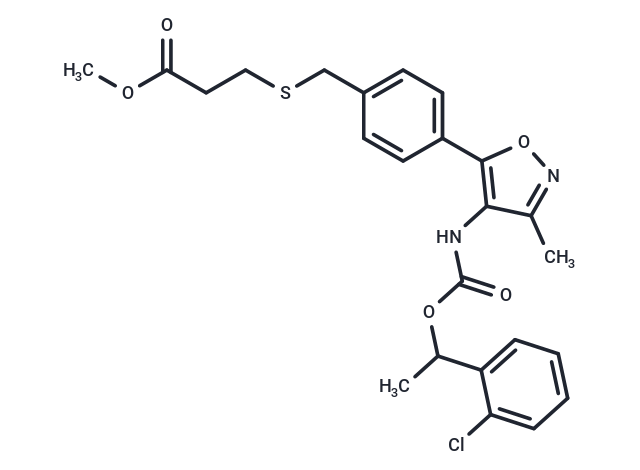Shopping Cart
Remove All Your shopping cart is currently empty
Your shopping cart is currently empty
Ki16198 is an orally available LPA receptor antagonist and is a methyl ester derivative of Ki16425. It inhibits LPA1- and LPA3-induced inositol phosphates with Ki values of 0.34 and 0.93 μM, respectively, and can be used in studies of pancreatic carcinogenesis and metastasis.

| Pack Size | Price | USA Warehouse | Global Warehouse | Quantity |
|---|---|---|---|---|
| 5 mg | $30 | In Stock | In Stock | |
| 10 mg | $50 | In Stock | In Stock | |
| 25 mg | $103 | In Stock | In Stock | |
| 50 mg | $163 | In Stock | In Stock | |
| 100 mg | $237 | In Stock | In Stock | |
| 200 mg | $337 | In Stock | In Stock | |
| 1 mL x 10 mM (in DMSO) | $32 | In Stock | In Stock |
| Description | Ki16198 is an orally available LPA receptor antagonist and is a methyl ester derivative of Ki16425. It inhibits LPA1- and LPA3-induced inositol phosphates with Ki values of 0.34 and 0.93 μM, respectively, and can be used in studies of pancreatic carcinogenesis and metastasis. |
| Targets&IC50 | LPA1:0.34 μM(Ki), LPA3:0.93 μM(Ki) |
| In vitro | Saxagliptin has an inhibition constant Ki of 1.3 nM for DPP4 inhibition, which is 10-fold more potent than either vildagliptin or sitagliptin (another two DPP4 inhibitors) with Ki of 13 and 18 nM. In addition, Saxagliptin demonstrates greater specificity for DPP4 than for either the DPP8 or DPP9 enzymes (400- and 75- fold, respectively). The active metablite of saxagliptin is two-fold less potent than the parent. Both Saxagliptin and its metabolite are highly selective (>4000-fold) for the prevention of DPP4 compared with a range of other proteases (selectivity of sitagliptin and vildagliptin for DPP4 is >2600 and <250-fold, respectively, compared with DPP8 and DPP9). [2] Saxagliptin reduces the degradation of the incretin hormone glucagon-like peptide-1, thereby enhancing its actions, and is associated with improved β-cell function and suppression of glucagon secretion. [3] |
| Molecular Weight | 488.98 |
| Formula | C24H25ClN2O5S |
| Cas No. | 355025-13-7 |
| Smiles | COC(=O)CCSCc1ccc(cc1)-c1onc(C)c1NC(=O)OC(C)c1ccccc1Cl |
| Relative Density. | no data available |
| Storage | Powder: -20°C for 3 years | In solvent: -80°C for 1 year | Shipping with blue ice/Shipping at ambient temperature. | ||||||||||||||||||||||||||||||||||||||||
| Solubility Information | DMSO: 50 mg/mL (102.25 mM), Sonication is recommended. Ethanol: 33 mg/mL (67.49 mM), Sonication is recommended. H2O: < 1 mg/mL (insoluble or slightly soluble) | ||||||||||||||||||||||||||||||||||||||||
| In Vivo Formulation | 10% DMSO+90% Corn Oil: 2.5 mg/mL (5.11 mM), Sonication is recommeded. Please add the solvents sequentially, clarifying the solution as much as possible before adding the next one. Dissolve by heating and/or sonication if necessary. Working solution is recommended to be prepared and used immediately. The formulation provided above is for reference purposes only. In vivo formulations may vary and should be modified based on specific experimental conditions. | ||||||||||||||||||||||||||||||||||||||||
Solution Preparation Table | |||||||||||||||||||||||||||||||||||||||||
Ethanol/DMSO
DMSO
| |||||||||||||||||||||||||||||||||||||||||
| Size | Quantity | Unit Price | Amount | Operation |
|---|

Copyright © 2015-2025 TargetMol Chemicals Inc. All Rights Reserved.